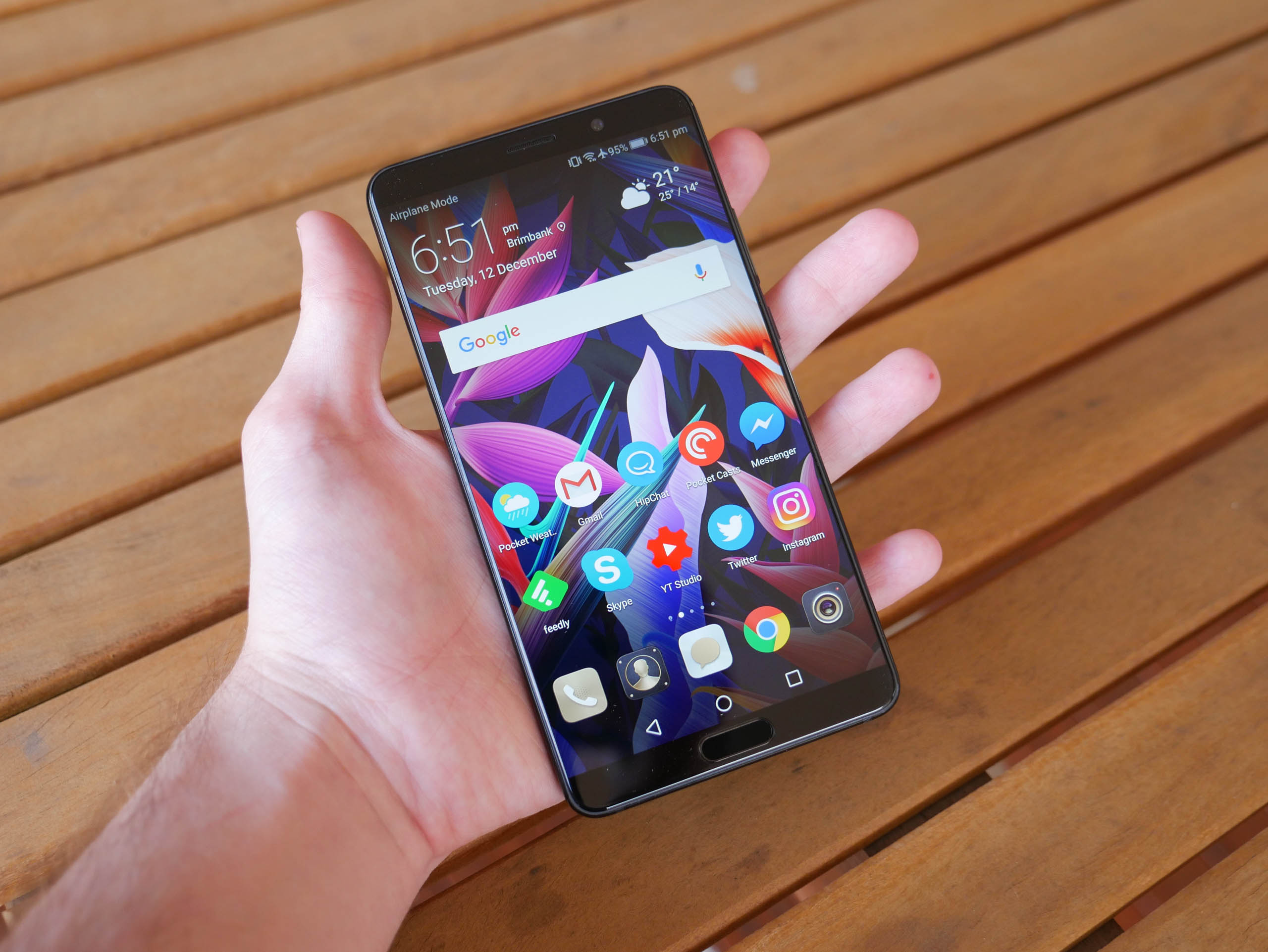Close to Getting Everything Right, But...
The Huawei Mate 10 is another phone released this year that I feel is close to getting everything right, but ultimately falls short. There are a number of great things about this handset, headlined by a fantastic price point, though with stellar competition, it's hard to recommend it to everyone.
Let's start with the good stuff: The Mate 10 is a better buy than the 'higher-end' Mate 10 Pro because it includes a headphone jack, a microSD card slot, and it features a larger, higher-resolution display. Headphone jacks are still essential inclusions on modern smartphones in my opinion, while the screen on this handset is hard to top.
It's big, thanks to its 16:9 aspect ratio, and it's the first Huawei device to push up to a 1440p resolution, which provides extra clarity at this size. The Kirin 970 SoC used in the Mate 10 is an improvement on the Kirin 960 that we saw in the P10, primarily in the graphics department, which closes the gap again on the powerhouse Snapdragon 835.
The key addition to the SoC is the Neural Processing Unit, though it remains to be seen whether this AI-focused block will deliver an advantage in some workloads. And storage performance is as strong as ever, topping the charts once again.
Unfortunately the Kirin 970 does throttle heavily, particularly in GPU heavy workloads. In this regard, the Kirin 970 is a regression compared to the Kirin 960, which is a disappointment considering its improvement in other areas.
On a less positive note, the design of the Mate 10 is quite slippery with glass on both sides, and a glossy finish to the metal edges. The bezels around the display are remarkably small for a 16:9 panel, which helps to make the phone as compact as possible, however it's still a large handset and it is a bit too hard to grip. The phone doesn't look as premium as the best designs on the market either, at least in my opinion.
There's also the issue of software, which just plain sucks. I don't like EMUI, I don't like its visual style, I don't like some of the changes it makes compared to stock Android, and I especially don't like all the junk that's pre-installed. Move over to the Pixel 2 XL with its stock Android 8.0 and it feels a whole generation more modern, which is not good news for the Mate 10 that also runs Android 8.0.
As for the camera system, it's good without being great. There are a few inconsistencies with how it performs indoors, and it lacks the top-end quality of phones like the Pixel 2 and iPhone X. However, the simulated bokeh feature is customizable and works well (aside from edge detection), and image quality in sunlight and low light is very good. Plus the camera app is packed with features.
The Mate 10 is currently available for around $680 through Amazon, which places it a few hundred dollars below competitors like the Pixel 2 XL, LG V30, and Samsung Galaxy Note 8. I feel this is a fair price considering the difference in quality; phones like the Pixel 2 XL and Galaxy Note 8 in particular are better, but they're also more expensive.
With that said, if you are after a large-screen phone and just want a great display, excellent battery life, good enough performance and features like a headphone jack, the Mate 10 does provide a decent option at a lower price point. However, I'd still consider the cheaper OnePlus 5T if budget is a concern, and I feel that if you're about to drop $700 on a phone, it's worth spending an extra $150 to grab the superior Pixel 2 XL.
Shopping Shortcuts:
- Huawei Mate 10 on Amazon, Newegg
- OnePlus 5T on Amazon, Newegg, OnePlus.com
- Pixel 2 XL on Amazon, Newegg, Google.com
score
Pros: Better features than the Mate 10 Pro, like a headphone jack, microSD card slot, and a fantastic high-resolution display. Decent peak performance with excellent battery life. Cheaper than similar-sized competitors.
Cons: Software needs an overhaul to compete with Google. Kirin 970 throttles heavily. Slippery design isn't great on a phone this large.




